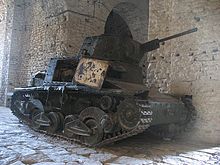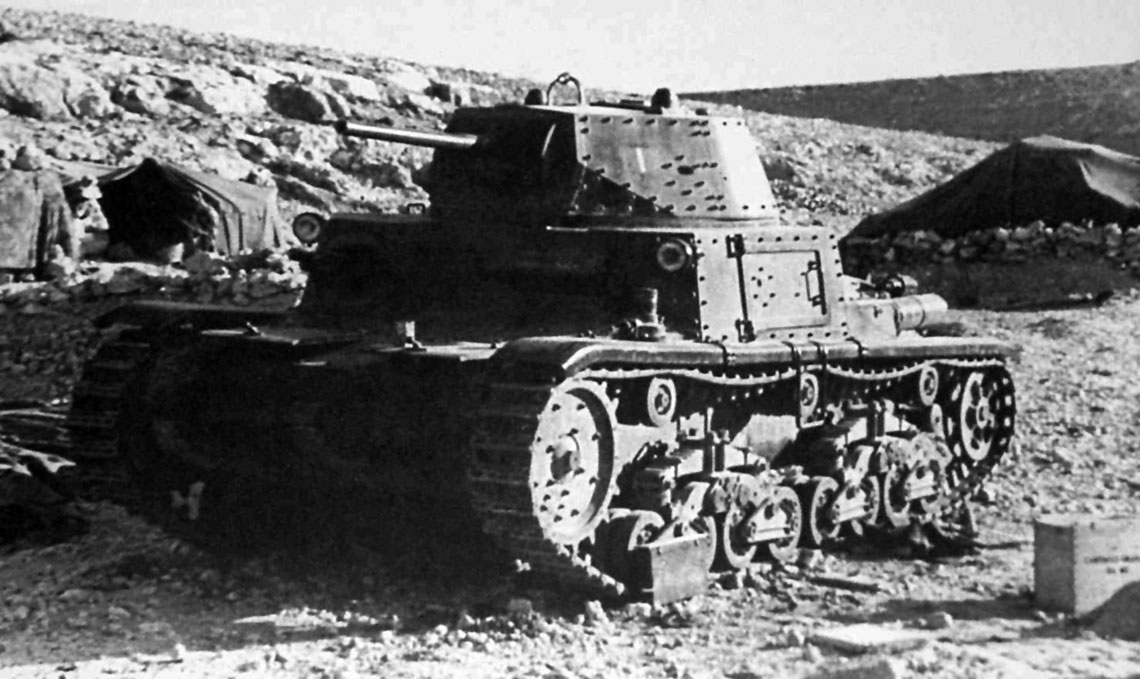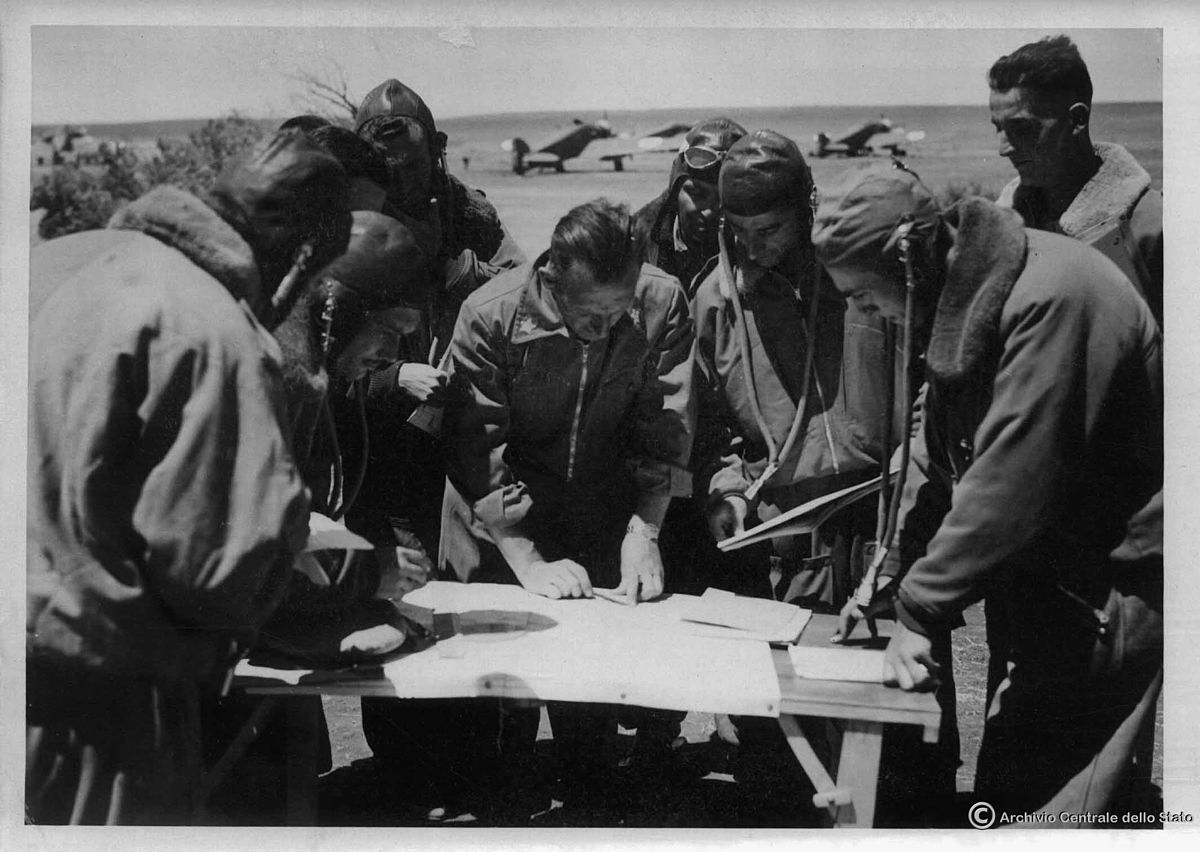
Mussolini's fist. Tanks of the Kingdom of Italy in 1917-1945

The next link in the development of Italian medium tanks was the M14/41, the most massive (895 units) Italian vehicle in its category.
The Italian ground forces of World War II are remembered as the proverbial whipping boys for the Allies, who were saved only by the German Afrika Korps. This opinion is not entirely deserved, since the lack of success was influenced, among other things, by the poor command staff, logistical problems, and finally, relatively scarce and not modern equipment, moreover, armored.
During the First World War, the Italian army did not do much on the Alpine front. She had some success over the Austro-Hungarian army, but only by attracting significant forces of the latter on other fronts. However, they always came at the cost of huge losses (not to mention the defeats that also took place), even in the last major battle of Vittorio Veneto on October 24 - November 3, 1918, in which the Italians (with the support of other Entente states) lost almost 40 XNUMX people. People.
This situation is somewhat reminiscent of the actions on the Western Front, where the trench warfare was also going on. In eastern France, German infiltration tactics on the one hand, and hundreds of British and French tanks on the other, helped bring the deadlock to a standstill. However, on the Alpine front, their use was difficult, since the battles were fought in mountainous terrain, on slopes, peaks and among narrow paths. Attempts to build their own tank had been made since 1915, but industrial proposals such as the super-heavy tank Fortino Mobile Tipo Pesante were invariably rejected by the Italian Ministry of Defense. However, at the beginning of 1917, the French tank Schneider CA 1 was acquired, thanks to the efforts of Captain C. Alfredo Bennicelli. The Italian industry also tried to build its own tank, resulting in the failed FIAT 2000, the heavy Testuggine Corazzata Ansaldo Turrinelli Modello I and Modello II projects (the latter on four tracked units!) And the super-heavy Torpedino, also built by Ansaldo. Successful trials of the CA 1 led to an order for 20 more Schneiders and 100 Renault FT light tanks in the fall of 1917, but the order was canceled due to failure at the Battle of Caporetto (fighting on the Piava River). However, by May 1918, Italy received another CA 1 tank and several, probably three FT tanks, from which the first experimental and training armored unit in the Italian army was created in the summer of 1918: Reparto speciale di marcia carri d'assalto. (Special unit of combat vehicles). ; over time, CA 1 was replaced by FIAT 2000). In exchange, a license agreement was signed between the Renault and FIAT factories for the production of 1400 FT tanks, but by the end of the war only 1 copy was delivered (according to some reports, partly due to the fault of the French, who failed to support the start of production; according to other sources, the Italians focused on their own project and abandoned FT). The end of the First World War marked the end of the first period
development of Italian tanks.
The first Italian armored structures
The Italians became interested in the issue of obtaining a mobile "shelter", which was supposed to support the infantry attacking the trenches with its fire. In 1915-1916, the preparation of several projects began. However, caterpillar traction was not an obvious solution for everyone - hence, for example, the "tank" cap. Luigi Guzalego, artilleryman by profession, passionate engineer. He proposed the design of a walking machine, on which the running system (it is difficult to talk about the running gear) consisted of two pairs of skis moving synchronously. The hull itself was also two-section; in the lower part, the installation of the drive unit is provided, in the upper part - the fighting compartment and the "handles" that set the skis in motion.
Even crazier was the project of eng. Carlo Pomilio from 1918. He proposed an armored vehicle based on ... a cylindrical central structure that accommodates the engine, crew and weapons compartment (two light guns placed on the sides of the cylinder). There was a casing around the cylinder that connected the rest of the elements to it, and there were two additional smaller wheels (cylinders) at the back and front, which improved off-road patency.
Not all Italian engineers were so original. In 1916, Ansaldo engineer Turnelli introduced the Testuggine Corazzata Ansaldo Turinelli (Modello I) (owned by the Turinelli Model I Armored Turtle). It was supposed to have a mass of 20 tons (probably about 40 tons if implemented), a length of 8 m (hull 7,02), a width of 4,65 m (hull 4,15) and a height of 3,08 m. have a thickness of 50 mm, and armament - 2 75-mm cannons in rotating towers in the front and rear of the vehicle, located on the roof. At the same time, from each side the car had two loopholes for arming the crew (RKM, design bureau, etc.). Power was to be provided by two 200 hp carburetor engines. each, transmitting power to Soller-Mangiapan electric motors, performing the functions of the actual drive and transmission in one person. The suspension was supposed to consist of two pairs of bogies, each of which blocked two large jointly driving road wheels, surrounded by wide (800-900 mm!) Caterpillars. Additional movable drums were to be installed in front and behind to cross the trenches. The crew was supposed to consist of 10 people.
